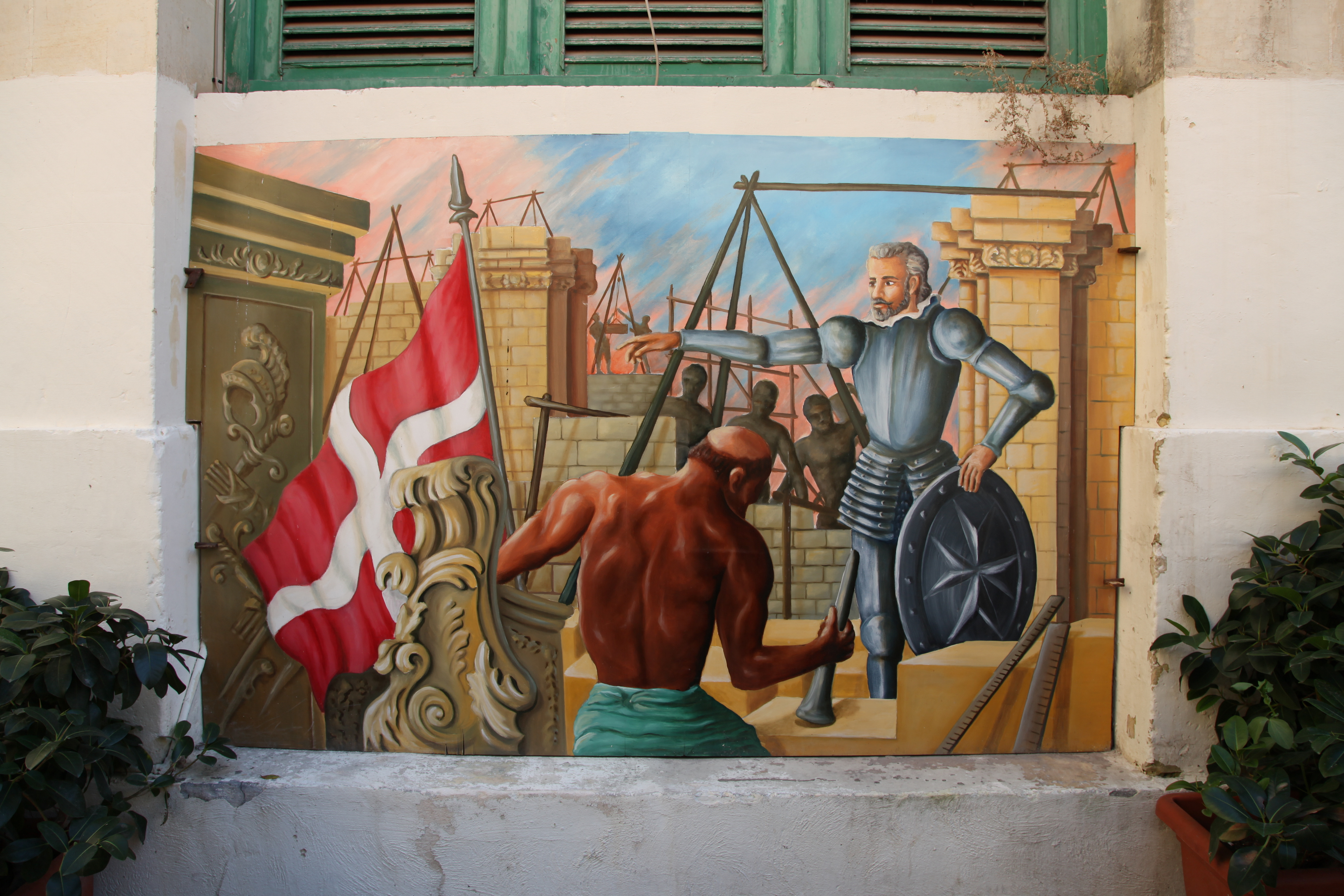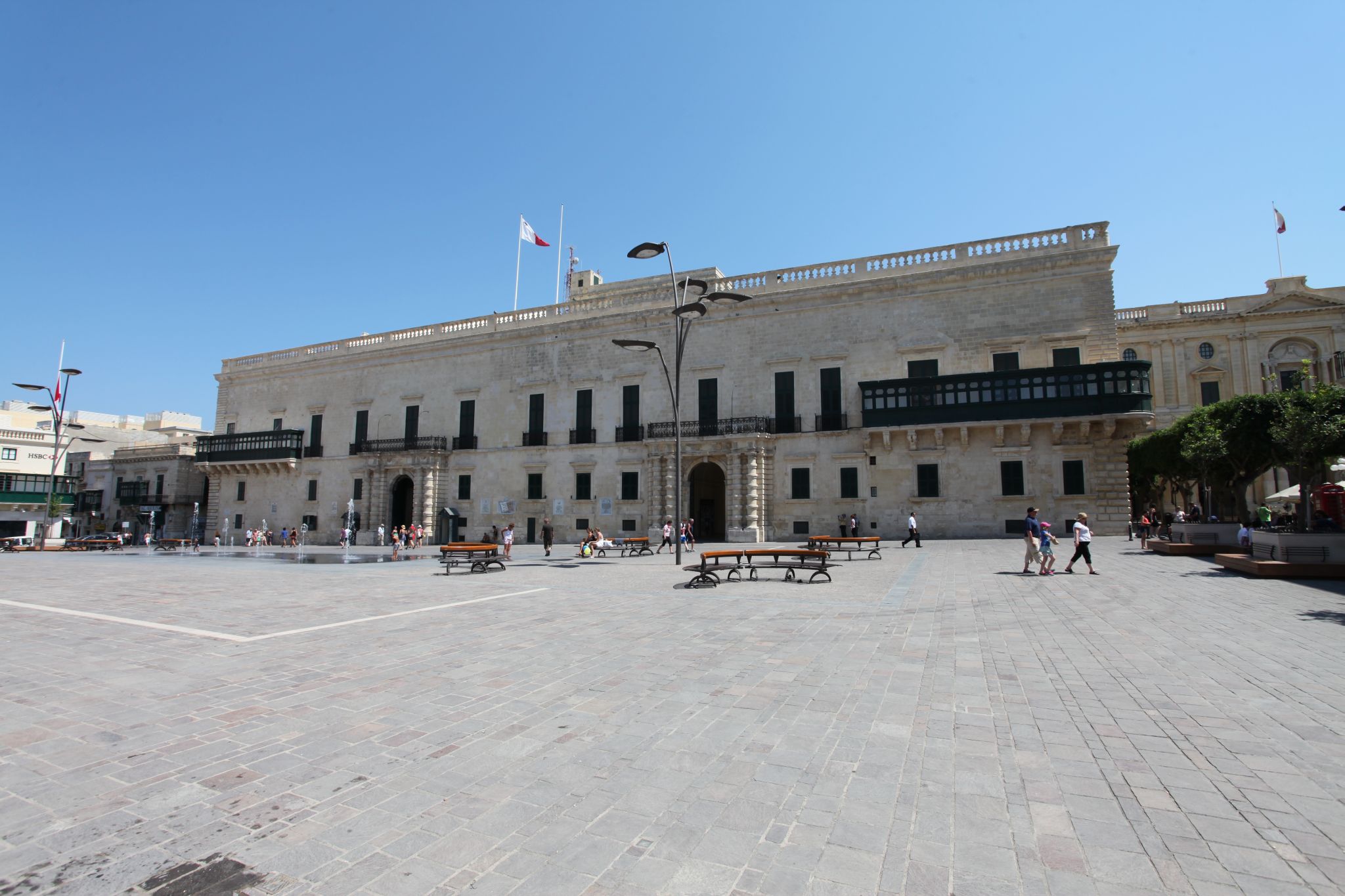|
Ospizio, Floriana
The ''Ospizio'' (), originally known as the ''Casa di Carità'', was a poorhouse in Floriana, Malta which cared for destitute elderly men and women, poor young women, and mentally ill patients during the 18th and 19th centuries. It also served as a women's prison. It was housed in a complex of buildings along the Floriana Lines overlooking Marsamxett Harbour, which are currently being restored and incorporated into the Malta International Contemporary Art Space (MICAS). History In 1665, the Congregation of War of the Order of St John began making plans to construct a gunpowder factory along the Floriana Lines overlooking Marsamxett Harbour. The factory was designed by military engineer Mederico Blondel and it was completed by 1667, with several casemates being added in the vicinity in later decades. The factory continued to produce gunpowder until the early 1720s. In 1729, the former factory was repurposed as a hospice where elderly patients were cared for. On 6 December 17 ... [...More Info...] [...Related Items...] OR: [Wikipedia] [Google] [Baidu] |
Poorhouse
A poorhouse or workhouse is a government-run (usually by a county or municipality) facility to support and provide housing for the dependent or needy. Workhouses In England, Wales and Ireland (but not in Scotland), "workhouse" has been the more common term. Before the introduction of English Poor Laws, the Poor Laws, each parish would maintain its own workhouse; often these would be simple farms with the occupants dividing their time between working the farm and being employed on maintaining local roads and other parish works. An example of one such is Strand House, The Strand, Winchelsea, Strand House in East Sussex. In the early Victorian era (see Poor Law), poverty was seen as a dishonourable state. As depicted by Charles Dickens, a workhouse could resemble a reformatory, often housing whole families, or a penal labour regime giving manual work to the indigent and subjecting them to corporal punishment, physical punishment. At many workhouses, men and women were split up with ... [...More Info...] [...Related Items...] OR: [Wikipedia] [Google] [Baidu] |
Valletta
Valletta ( ; , ) is the capital city of Malta and one of its 68 Local councils of Malta, council areas. Located between the Grand Harbour to the east and Marsamxett Harbour to the west, its population as of 2021 was 5,157. As Malta’s capital city, it is a commercial centre for shopping, bars, dining, and café life. It is also the southernmost capital of Europe, and at just , it is the European Union's smallest capital city. Valletta's 16th-century buildings were constructed by the Hospitaller Malta, Knights Hospitaller. The city was named after the Frenchman Jean Parisot de Valette, who succeeded in defending the island against an Ottoman invasion during the Great Siege of Malta. The city is Baroque architecture, Baroque in character, with elements of Mannerist architecture#Mannerist architecture, Mannerist, Neoclassical architecture, Neo-Classical and Modern architecture, though the Second World War left major scars on the city, particularly the destruction of the Royal Oper ... [...More Info...] [...Related Items...] OR: [Wikipedia] [Google] [Baidu] |
British Army
The British Army is the principal Army, land warfare force of the United Kingdom. the British Army comprises 73,847 regular full-time personnel, 4,127 Brigade of Gurkhas, Gurkhas, 25,742 Army Reserve (United Kingdom), volunteer reserve personnel and 4,697 "other personnel", for a total of 108,413. The British Army traces back to 1707 and the Acts of Union 1707, formation of the united Kingdom of Great Britain which joined the Kingdoms of Kingdom of England, England and Kingdom of Scotland, Scotland into a Political union, single state and, with that, united the English Army and the Scots Army as the British Army. The Parliament of England, English Bill of Rights 1689 and Convention of the Estates, Scottish Claim of Right Act 1689 require parliamentary consent for the Crown to maintain a peacetime standing army. Members of the British Army swear allegiance to the Charles III, monarch as their commander-in-chief. The army is administered by the Ministry of Defence (United Kingd ... [...More Info...] [...Related Items...] OR: [Wikipedia] [Google] [Baidu] |
Army Ordnance Department
The Royal Army Ordnance Corps (RAOC) was a corps of the British Army. At its renaming as a Royal Corps in 1918 it was both a supply and repair corps. In the supply area it had responsibility for weapons, armoured vehicles and other military equipment, ammunition and clothing and certain minor functions such as laundry, mobile baths and photography. The RAOC was also responsible for a major element of the repair of Army equipment. In 1942 the latter function was transferred to the Royal Electrical and Mechanical Engineers (REME) and the vehicle storage and spares responsibilities of the Royal Army Service Corps were in turn passed over to the RAOC. The RAOC retained repair responsibilities for ammunition, clothing and certain ranges of general stores. In 1964 the McLeod Reorganisation of Army Logistics resulted in the RAOC absorbing petroleum, rations and accommodation stores functions from the Royal Army Service Corps as well as the Army Fire Service, barrack services, sponsor ... [...More Info...] [...Related Items...] OR: [Wikipedia] [Google] [Baidu] |
Luqa
Luqa ( , ) is a town located in the Southern Region of Malta, 4.3 km away from the capital Valletta. With a population of 5,945 as of March 2014, it is a small but densely populated settlement which is typical of Malta's older towns and villages. Luqa is centered around a main square which contains a church dedicated to St. Andrew. The patron saint's traditional feast is celebrated on the first Sunday of July, with the liturgical feast being celebrated on 30 November. The Malta International Airport is located in Luqa. Notable residents of the town included Michelangelo Sapiano (1826–1912), a well-known clockmaker and inventor whose work includes the clock in the parish church's belfry. The house where he lived is located on Pawlu Magri Street. History In 1592 the village of Luqa was hit by a plague epidemic, which hit all the population of Malta and caused many deaths. A sign of this sad episode is the cemetery found in Carmel Street, Alley 4 where people were buried ... [...More Info...] [...Related Items...] OR: [Wikipedia] [Google] [Baidu] |
Times Of Malta
The ''Times of Malta'' is an English-language daily newspaper in Malta. Founded in 1935, by Lord and Lady Strickland and Lord Strickland's daughter Mabel, it is the oldest daily newspaper still in circulation in Malta. It has the widest circulation of any Maltese newspaper. The newspaper is published by Allied Newspapers Limited, which is owned by the Strickland Foundation, a charitable trust established by Mabel Strickland in 1979 to control the majority of the company. History The history of ''The Times'' of Malta is linked with that of its publishing house, Allied Newspapers Limited. This institution has a history going back to the 1920s, when it pioneered journalism and the printing industry in Malta. It all started with the publication, by Gerald Strickland, of Malta's first evening newspaper in Maltese, ''Il-Progress''. This was a four-page daily with its own printing offices in what was then 10A, Strada Reale, Valletta. The name "Progress" is retained to this day by ... [...More Info...] [...Related Items...] OR: [Wikipedia] [Google] [Baidu] |
1837 Malta Cholera Epidemic
Events January–March * January 1 – The destructive Galilee earthquake causes thousands of deaths in Ottoman Syria. * January 26 – Michigan becomes the 26th state admitted to the United States. * February 4 – Seminoles attack Fort Foster in Florida. * February 25 – In Philadelphia, the Institute for Colored Youth (ICY) is founded, as the first institution for the higher education of black people in the United States. * February – Charles Dickens's ''Oliver Twist'' begins publication in serial form in London. * March 1 – The Congregation of Holy Cross is formed in Le Mans, France, by the signing of the Fundamental Act of Union, which legally joins the Auxiliary Priests of Blessed Basil Moreau, CSC, and the Brothers of St. Joseph (founded by Jacques-François Dujarié) into one religious association. April–June * April 12 – The conglomerate of Procter & Gamble has its origins, when British-born businessmen William Procter and James Gamble begin selling ... [...More Info...] [...Related Items...] OR: [Wikipedia] [Google] [Baidu] |
Villa Franconi
Villa Franconi was an 18th-century residential building in Floriana, Malta which was repurposed as a mental hospital known as the Franconi Asylum from 1835 to 1861. The building was demolished in the late 19th century. History Villa Franconi was constructed as the residence of Bali' Fra Fabrizio Franconi, a knight of the Order of St John who served in the Hospitaller fleet. Franconi made a petition for obtaining a free plot of land in Floriana on 24 January 1739, on which he initially built a small house with a garden. This was later expanded into a villa with a main facade along ''Strada Magazzeni''. The property later passed to the Mattei family, before being acquired by the British government on 30 September 1802. In 1835, the Commissioners of Charity made a proposal to establish a new mental asylum to replace the Ospizio, which had been deemed unsuitable for the care of mentally-ill patients. Villa Franconi was chosen as the site of the asylum, and structural alterations wer ... [...More Info...] [...Related Items...] OR: [Wikipedia] [Google] [Baidu] |
Thomas Maitland (British Army Officer)
Lieutenant General Sir Thomas Maitland (10 March 1760 – 17 January 1824) was a British Army officer, politician and colonial administrator. He also served as a Member of Parliament for Haddington from 1790 to 1796, 1802–06 and 1812–13. He was made a Privy Councillor on 23 November 1803. He was the second surviving son of James Maitland, 7th Earl of Lauderdale, and the younger brother of James Maitland, 8th Earl of Lauderdale. Maitland never married. Early military career Maitland was commissioned into the Edinburgh Light Horse, shortly after his birth, but did not take up his commission until he joined the 78th (Highland) Regiment of Foot (Seaforth Highland Regiment) as a captain in 1778. He transferred to the 62nd Foot as a major in 1790. He was promoted lieutenant-colonel in 1794 and colonel and brigadier-general in 1798. Haitian Revolution In 1797, Maitland landed in Saint-Domingue, under orders to capture the French colony. Maitland realised that his forces ... [...More Info...] [...Related Items...] OR: [Wikipedia] [Google] [Baidu] |
Crown Colony Of Malta
The Crown Colony of the Island of Malta and its Dependencies (commonly known as the Crown Colony of Malta or simply Malta) was the British colony in the Maltese islands, that has become the modern Republic of Malta. It was established when the Malta Protectorate was transformed into a British Crown colony in 1813, and this was confirmed by the Treaty of Paris (1814), Treaty of Paris in 1814. The colony gained independence in 1964. Establishment and early years (1813–1824) From 1530 to 1798, Malta had been Hospitaller Malta, ruled by the Order of Saint John. The Order was ousted during the War of the Second Coalition and Malta was French occupation of Malta, occupied by Napoleon. The Maltese rebelled after a couple of months of French rule and asked Britain for help. Eventually, the French capitulated in 1800 and Malta voluntarily became a British Protectorate, British protectorate. Britain was then supposed to evacuate the island according to the terms of the Treaty of Ami ... [...More Info...] [...Related Items...] OR: [Wikipedia] [Google] [Baidu] |



